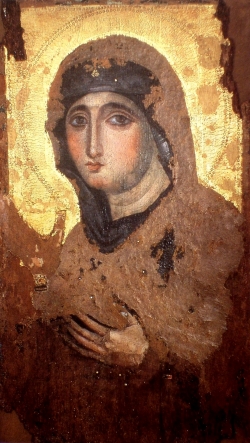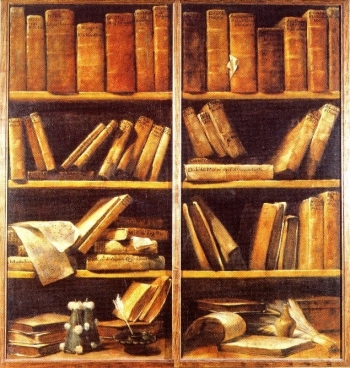The term “cultural good” entered ecclesiastical language only with the current Code of Canon Law (CIC/1983 can. 1283, n. 2). But the Catholic Church, firstly through the legislation of the Pontifical State and then with the universal canonical law, contributed notably to formulating the concept of “cultural patronage” during the nineteenth century (S. Settis, Discorso per il Ventennale della Pontificia Commissione per i Beni Culturali della Chiesa, 26 novembre 2009).
The attention of the Church to this reality was so great that St John Paul II instituted in 1988 a Commission with the task of presiding over the safeguarding of historical and artistic patronage of all the Church, (cfr Cost. apost. Pastor bonus, art. 99) which in 1993 was called the Pontifical Commission for the Cultural Goods of the Church (Motu proprio “Inde a Pontificatus”). Benedict XVI united it to the Pontifical Council for Culture (Motu proprio "Pulchritudinis Fidei”, 30 July 2012) transferring its tasks and responsibilities.
Cultural Goods includes the works of art (architectural and material produced with any technique) from the past that need to be kept and conserved with the greatest care, and also the contemporary works to which a historical value can be recognised. The management of such goods continues even after its specific use has finished: in this case, moveable goods can be housed conveniently in ecclesiastical museums where they can be appreciated by the public (cfr Pastor bonus, art. 100). The artistic patrimony is accompanied by that of the libraries and archives which have a twofold value as juridic instruments witnessing rights and duties of ecclesiastical entities – who are largely responsible for their care – and as sources of history for the ecclesiastical institutions and concerning the life of the people of God (cfr ivi, art. 101). In all these cases, such goods and their respective institutions of conservation must be entrusted to competent people “so that such witnesses will not be lost” (cfr ivi, art. 102).
While the typology of the cultural goods is analogous to that defined by civil state legislation, the perspective through which they are seen by the Church is above all religious, as is attested by the life of faith of the Christian community, and so it is cultural. According to the definition of John Paul II, they are goods “placed at the service of the mission of the Church” (Discourse, 12 October 1995), that is expressions of liturgical life, of piety, of Gospel proclamation, and of charity. The doctrine concerning the ecclesiastical cultural goods has certainly received an impulse both from the Papal dicourses to the former Pontifical Commission and from the documents that it elaborated.
So now it will be the Pontifical Council for Culture through its Department for Cultural Goods and the Arts that will collaborate with the appropriate episcopal organs, that exist within the bishops’ conferences to gather and safeguard the entire artistic and historical patrimony, intervening, if necessary, for the constitution of museums, libraries and ecclesiastical archives. It also engages in ensuring access to such patronage on behalf of those who are interested therein (cfr Pastor bonus, art. 102).
Moreover, it has the cultural task of ensuring that the people of God, beginning with its pastors, are educated to appreciate the importance of this historical and artistic patrimony and to give an account of the need to conserve and make the most of it. The Council also has the task of dialoging with contemporary artists and musicians to ensure that the faith is today again the insipiration for works of art. And this work is carried out together with the Congregation for Divine Worship and Discipline of the Sacraments (to whom belong the questions inherent to music, art and architecture for worship), the Congregation for the Clergy, and the Congregation for Catholic Education (whose competence is the academic formation of priests and laity) (cfr ivi, art. 103).
Finally, the Pontifical Council authorises the loans of cultural goods by Italian dioceses for exhibitions outside Italian territory.


 Giuseppe Maria Crespi, Library and musical archive, 1725-30. Bologna, Museo Musicale
Giuseppe Maria Crespi, Library and musical archive, 1725-30. Bologna, Museo Musicale